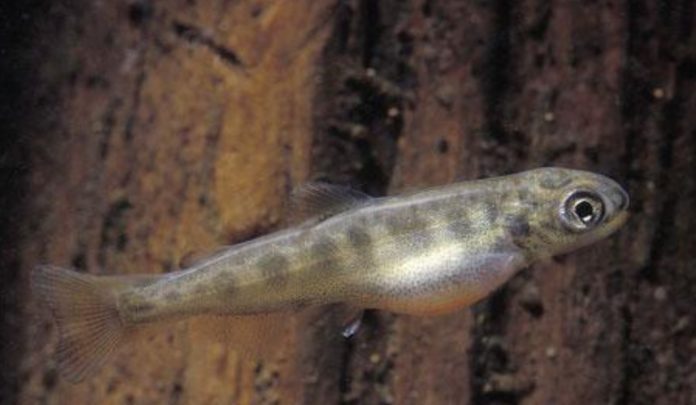Researchers studying geomagnetic waves and salmon come across a breakthrough that looks useful for hatcheries
If you want your alevin-stage (baby) salmon to rise-and-shine quickly after hatching, consider clearing the area of alternate magnetic fields, suggests research from the same scientists who found salmon navigated long-distance using the Earth’s geomagnetic field.
When young salmon emerge from gravel (or perhaps their hatchery tubs) to reach for surface water, it’s the earth’s magnetic field that guides them, Oregon State University Researchers declared this week. They found that groups of newly hatched salmon rose higher and more quickly to reach that surface water when extra electro-magnetic waves weren’t around.
In other words, electromagnetic waves tells them which way is up (where the food is), as they emerge from the gravel where their mothers deposited them as eggs.
Waves over light
“Getting out of the gravel is not as easy as it might seem, but it is of critical importance,” said professor David Noakes of the University’s Oregon Hatchery Research Centre, where he earlier studied how temperature, light, and water affect salmon’s emergence.
“All could be used by the fish, but none was essential,” he said. “In the absence of these cues, fish still moved out of the gravel. Now we have the answer to that.”
His team put together a system of copper-wire coils through which a very low electric current was run to precisely control the magnetic field around the fish. Fish ready to move to surface waters were placed at the bottom of plastic tubes with false gravel above.
The height fish moved up to in the tubes was studied for 30 minutes.
Rise faster
One group of baby salmon were exposed to nothing but the earth’s magnetic field in Oregon and another to an inverted magnetic field. “Fish in the normal magnetic field moved significantly further up the tubes than did those that experienced the inverted magnetic field,” a statement said.
“Given that only inverting the magnetic field influenced fish movement, it seems salmon use the direction of field lines to orient vertically during their emergence from gravel. Our findings are difficult to interpret in any other way,” said Nathan Putman, senior scientist at LGL Ecological Research Associates in Bryan, Texas, and co-lead author on the study.
So, perhaps keep those pump motors and high-voltage cables — with their own electro-magnetic emissions — as far from hatchlings as possible, if you’re waiting for them to “wake up”.
The research above was partly funded by the Oregon Hatchery Research Centre










